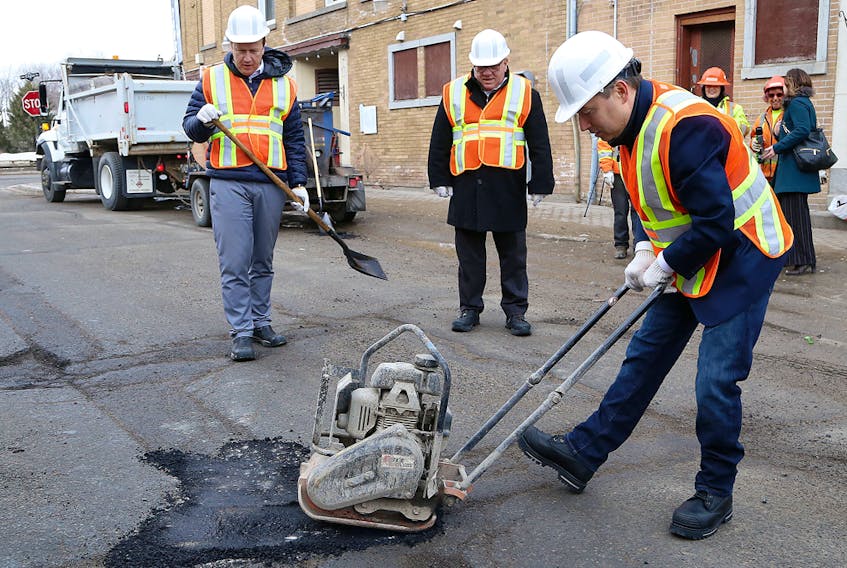Investing in infrastructure is a requirement for sustained economic growth. Housing affordability also depends on infrastructure development because extending the spatial reach of infrastructure makes more land developable, which facilitates new housing construction.
Despite its critical role in economic development, Canada continues to face an underfunding of infrastructure. In Ontario alone, the investment in infrastructure relative to GDP has declined as of late.
The estimate for the size of the urban (municipal) infrastructure deficit in Canada reaches well into the billions of dollars. Despite the willingness of the federal and provincial governments to make infrastructure investments a budgetary priority, actual spending has not kept pace with the promised amounts.
A report by the Parliamentary Budget Office (PBO) in March exposed the gap between the promised and invested funds in infrastructure. The report highlighted that the Investing in Canada Plan (IICP) earmarked $187.8 billion for infrastructure investments for the 2016-17 to 2027-28 period.
Federal government spending on infrastructure is based on cost sharing with provincial and municipal governments. The PBO report found that IICP helped “increase municipal capital spending, but not provincial capital spending.” The provinces spent $3.8 to $5.4 billion less than what they would have in the absence of federal investments.
By contrast, municipal governments spent a billion dollars more on infrastructure in 2017-18 than they would have in the absence of the federally matched funds.
The displaced funds have an adverse economic impact on the economy. Had the provincial spending matched the PBO’s projected spending, real GDP in 2016-17 would have increased by 0.15 per cent, thus growing jobs in the “range of 7,550 to 8,100.”
The point being made is not that the provinces reduced spending on infrastructure in absolute terms. They in fact increased infrastructure spending. The fine point is that the federal funds ended up displacing some of the planned provincial expenditures on infrastructure.
Whereas the PBO report does not highlight any deficiencies in federal spending on infrastructure, the stats reported suggest that of the $188 billion in planned spending between 2016 and 2028, the feds were only able to transfer less than $6 billion to the provinces for the 2016-17 and 2017-18 periods.
Another way of looking at the underspending by the provinces is to realize that of the planned $100 billion in infrastructure spending in 2016-17 and 2017-18, the provinces spent approximately $85 billion. The resulting gap is a considerable sum of $15 billion in forgone provincial infrastructure investments.
The Canadian Centre for Economic Analysis has produced several reports to analyze the underinvestment in infrastructure in Ontario. The Centre noted that “while the dollar value of infrastructure investment grew by 11 per cent between 2011 and 2018, investments as a percentage of Ontario’s GDP decreased from 3.25 per cent to 2.79 per cent — a 14.2 per cent drop in this key measure.”
What these numbers imply is that the spending in infrastructure is “not keeping pace with economic growth.” The Centre estimated that Ontario must increase investments in infrastructure to at least 5.4 per cent of GDP to maximize the real GDP growth.
Inadequate infrastructure spending is not necessarily a result of missing political will. Michael Fenn and coauthors in a 2019 discussion paper published by the Lawrence National Centre for Policy and Management at Western University identified six categories of risk that concern infrastructure development.
Among the identified risks is the industry capacity risk that arises when sufficient engineering and construction expertise, machinery, and trades are not available to meet the growing demand for infrastructure construction. Also, regulatory and governance risks could contribute to delays in project identification and approval; and failure in consensus-building between public and private sector entities.
A lack of adequate spending on infrastructure affects the livability of large and small towns. It also exposes existing communities to increasing risks. The flooding in Eastern Canada in 2019 and the 2013 floods in Calgary are examples of how vulnerable cities are to extreme weather events.
Inadequate spending on infrastructure limits future growth. A lack of adequate storm sewer capacity in central Toronto acts as a constraint to further densify the urban core. At the same time, greenfield developments in the outer suburbs could also be constrained by the limited capacity of sewers, water mains, roads, and public transit.
Municipalities are required to maintain an inventory of developable land to meet short-term development needs. Investing in infrastructure will result in a larger supply of developable land in desirable locations, which is likely to reduce land prices and increase the pace of construction.
Research has shown that housing affordability challenges are best met by an increase in the supply of housing, which depends upon developable land. That investing in infrastructure can help moderate housing prices is yet another reason to focus on strategic investments in infrastructure.
Murtaza Haider is a professor of Real Estate Management at Ryerson University. Stephen Moranis is a real estate industry veteran. They can be reached at www.hmbulletin.com .
Copyright Postmedia Network Inc., 2019









